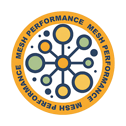How Diet, Exercise and Sleep Impact Fatty Liver Disease (MASLD): 3 Lifestyle Factors You Can Control
Learn how poor diet, inactivity, and bad sleep habits increase your risk of MASLD (fatty liver disease) and what lifestyle changes actually work to reverse it.
Bally Parekh MSc RD
6/4/20253 min read
3 Lifestyle Factors That Influence MASLD (Fatty Liver Disease) and How to Change Them
Metabolic dysfunction-associated steatotic liver disease (MASLD) is a condition largely driven by modifiable lifestyle factors. While genetics and underlying metabolic conditions play a role, it is an individual’s diet, physical activity habits and sleep patterns that are consistently shown to influence the development, progression, and severity of this disease.
How Does Diet Contribute to MASLD (fatty liver)?
Dietary patterns are a cornerstone in the development of MASLD. Diets high in energy-dense, processed foods, saturated and trans fats, refined carbohydrates, and added sugars — particularly fructose — are strongly associated with increased liver fat accumulation.
Key dietary factors linked to MASLD:
Fructose, especially from sugar-sweetened beverages and processed foods, drives hepatic de novo lipogenesis (DNL) and promotes insulin resistance.
Saturated fats, found in fast food, confectionery, and some processed meat products, contribute to lipotoxicity and hepatic inflammation.
Low dietary fibre and micronutrient intake can impair gut-liver axis health, increase systemic inflammation, and exacerbate disease progression.
Adopting a Mediterranean-style diet, rich in olive oil, oily fish, nuts, legumes, whole grains, and colourful fruits and vegetables, has consistently demonstrated benefits in reducing liver fat, improving insulin sensitivity, and lowering markers of inflammation.
In practice:
Many clients I see initially focus on calorie quantity alone, rather than the quality and type of nutrients consumed. I routinely assess not just macronutrient intake but fibre content, food variety, and dietary patterns that support hepatic and metabolic health. Individualised, sustainable changes are essential to achieve long-term improvements.
What Is the Role of Physical Activity (exercise) in MASLD?
A sedentary lifestyle is an established independent risk factor for MASLD. Insufficient physical activity is also closely associated with other metabolic risks, including type 2 diabetes, hypertension, dyslipidaemia, and visceral adiposity, all of which contribute to liver fat accumulation and progression to steatohepatitis (MASH).
Key benefits of regular physical activity:
Reduces hepatic fat content, independent of weight loss
Improves peripheral and hepatic insulin sensitivity
Enhances cardiorespiratory fitness
Positively influences muscle mass and physical function
Both aerobic exercise (e.g. walking, cycling, swimming) and resistance training (e.g. strength exercises) are effective. Current guidelines recommend aiming for 150–300 minutes per week of moderate-intensity activity or 75–150 minutes of vigorous-intensity aerobic activity, ideally supplemented by 2 or more resistance sessions per week.
In practice:
A common challenge I encounter is that clients may focus exclusively on dietary changes while neglecting activity levels, or they underestimate sedentary time outside of planned exercise. I integrate functional assessments and review of daily movement patterns as part of a holistic plan, including muscle mass preservation and physical resilience, especially in those with signs of frailty or sarcopenia.
How Does Sleep Impact MASLD Risk?
Emerging evidence highlights the significant impact of sleep on metabolic health and liver disease risk. Both insufficient sleep (typically defined as ≤5–6 hours per night) and poor sleep quality are linked with increased liver fat accumulation and a higher risk of advanced fibrosis.
Mechanisms linking poor sleep to MASLD:
Increased systemic inflammation
Worsening of insulin resistance
Altered glucose and lipid metabolism
Disruption of gut microbiota composition and function
Obstructive sleep apnoea (OSA), in particular, has a strong, independent association with MASLD, even after adjusting for obesity. Recurrent intermittent hypoxia associated with OSA promotes hepatic lipogenesis, inflammation, and oxidative stress.
Conclusion
Lifestyle factors, including diet, physical activity, and sleep, play a critical role in the development and progression of MASLD. These areas are consistently modifiable and offer considerable potential for disease management and reversal.
What I consistently see in practice:
People frequently focus on body weight alone, overlooking critical components like muscle mass, strength, frailty risk, and sleep health. Individualised, evidence-based nutrition and lifestyle interventions, incorporating a holistic assessment of diet, movement, sleep, and clinical status, offer the best outcomes for liver health and overall metabolic resilience.
FAQs
Is fatty liver disease reversible with lifestyle changes?
Yes, targeted improvements in diet quality, physical activity, sleep, and muscle mass preservation can reduce liver fat and inflammation.
How much exercise is recommended for MASLD (fatty liver)?
150–300 minutes per week of moderate aerobic activity, plus 2 or more resistance training sessions, is optimal. Even modest increases in daily activity improve outcomes.
Can sleep disorders like OSA increase fatty liver risk?
Yes, obstructive sleep apnoea independently raises MASLD risk and severity through mechanisms including intermittent hypoxia and systemic inflammation.
If you’re concerned about liver health, whether due to diet, inactivity, poor sleep, or metabolic risk factors, a comprehensive, personalised assessment can make a measurable difference.
How can I help you?
If you’d like expert, tailored support, book a consultation today at The Liver Nutrition Clinic. I’m Bally Parekh, MSc RD, Specialist Liver Dietitian, and I’d love to help you stay stronger for longer.
How can we help
At MESH Performance, Specialist Liver Dietitian Bally Parekh MSc. RD provides evidence-based nutrition support for those living with liver conditions. Our approach focuses on:
Sarcopenia and frailty assessments
Maintaining and rebuilding muscle to reduce the risk of frailty and malnutrition
Implementing targeted dietary strategies to support overall well-being and quality of life
Optimising nutrition to prevent deficiencies and support energy level
Managing a liver condition comes with challenges, but the right nutrition can make a real difference. We're here to provide practical support—let’s get started.


Our Instagram
Get in touch
info@mesh-performance.com



